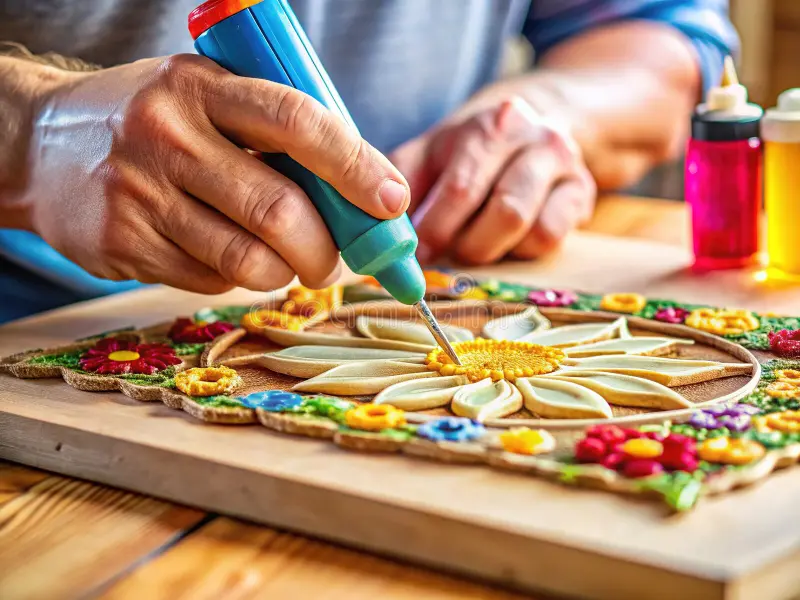
Playsourcehome – 10 DIY craft projects for playtime learning help kids develop creativity while picking up valuable skills. Many parents want activities that keep children engaged and teach them something meaningful at the same time. Crafting is perfect because it combines fun, hands-on work, and critical thinking. With simple materials and a little guidance, you can turn playtime into an enriching experience they’ll love.
“Read More: Radio Music Community: Information and Music Platform with Digital Streaming Technology”
DIY craft projects are a fun and creative way for kids to learn and play. Transform plain paper plates into colorful animal masks: let kids pick their favorite animal and use paint, markers, and yarn to decorate. They can cut ears, whiskers, or feathers and glue them on. This activity improves fine motor skills and boosts imaginative roleplay. When done, children can use the masks for pretend play or storytelling games.
Making play dough at home is easy and educational. Kids help mix flour, salt, water, and food coloring into a soft, moldable dough. They can experiment with colors and scents, learning about textures and measurements. Once it’s ready, the dough becomes a medium for sculpting shapes, letters, or animals. This project strengthens hand muscles and encourages creativity.
“Read About: Budget vs. Premium Slides: What You Really Get for Your Money”
Take kids outside to collect leaves, flowers, and twigs. Back inside, provide glue and paper to create a nature collage. They arrange their finds to make patterns or scenes from their imagination. This project teaches kids to observe nature closely and appreciate its diversity. They also practice arranging and planning a design while being creative.
Use recycled cardboard boxes to build a miniature city. Cut and stack boxes into buildings, add roads, cars, and parks with markers and small toys. Kids learn basic principles of structure, balance, and design. Working on this project over several days keeps them engaged and thinking critically. The result is a playset they can proudly show off.
Dye dry pasta in different bright colors and let kids thread them onto strings to make necklaces or bracelets. As they choose colors and create repeating patterns, they practice sequencing and counting. Fine motor skills improve as they handle the pasta pieces. When finished, they have wearable art they can trade or give as gifts.
First, go for a walk and collect smooth rocks. Once home, kids can paint the rocks to look like ladybugs, flowers, or even storybook characters. As they paint, they learn to pay attention to shapes and use colors creatively. After the paint dries, the rocks can decorate a garden, brighten a windowsill, or even be used in storytelling games. In this way, the activity connects art with outdoor exploration.
To start, work together to design and create a simple board game. Kids can draw a path on cardboard, decorate the spaces, and even make their own rules and cards. Additionally, they can use buttons or coins as playing pieces. Planning the game helps them think logically, solve problems, and practice fairness. Finally, playing the finished game reinforces what they learned while building it.
For this activity, give kids popsicle sticks, paper, markers, and glue to make character puppets. They can create people, animals, or even imaginary creatures. Then, once the puppets are finished, kids can put on a puppet show, making up stories as they go. As a result, this strengthens communication skills, builds confidence, and encourages creative expression. Moreover, parents can join in to make it even more fun.
To create sensory bottles, fill clear plastic bottles with water, glitter, beads, or tiny toys. When kids shake them, they can watch the contents swirl and settle. In the process, making the bottles teaches them about density and observation. Furthermore, the finished bottles are great for quiet play or calming down after a busy day. Each one is unique and personal, making the activity even more special.
For this project, give kids old magazines, printed photos, and colorful paper to create a scrapbook. They can write captions, decorate pages, and arrange memories creatively. As they work, this activity helps them reflect on happy moments and practice storytelling. In addition, crafting a scrapbook builds fine motor skills and organizational thinking. Ultimately, it becomes a keepsake they’ll treasure for years.